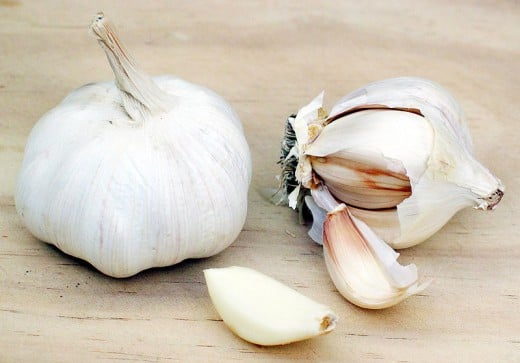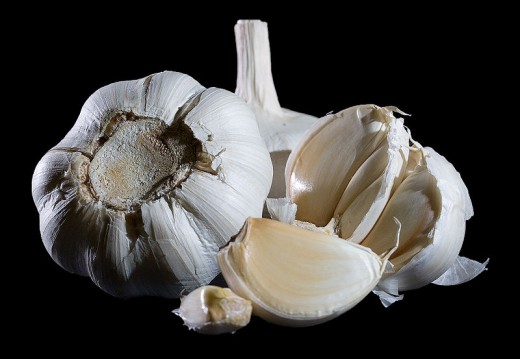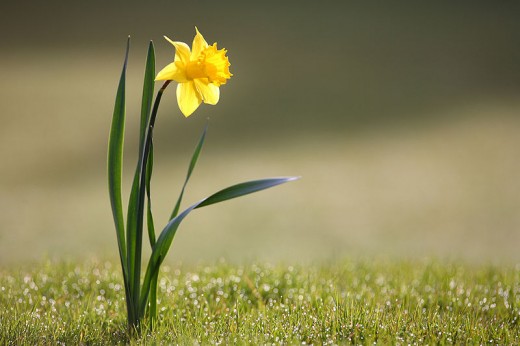What are the Benefits of Garlic
Where did Garlic Originate
First, let's look at the two words that make up the word garlic. "Gar" is Gaelic/old English for "spear." "Leek" is another word of Gaelic origin and it's the name for daffodil. If you've ever seen a (picture 3 below) daffodil you'll see an instant resemblance between any of the onion family (including garlic) and the long smooth stemmed flower.
The origins of garlic are confused at best. The genus of the plant is called Alliumand it is found in southwest Asia other species of garlic are found, growing wild, in fields in Europe including the northern reaches of the British Isles.
It is thought that these "wild" varieties were actually brought to the area in pre-history so there's not a definitive answer as to were garlic actually originated.
Garlic, the commercial varieties, are quite literally grown all over the world with China being the leading producer. India, South Korea, Egypt, Russia, and the United States trail, in that order.
It is also grown in Spain, Argentina, Myanmar, and The Ukraine.
All parts of the garlic plant are edible including seeds, flowers, stems, and of course the bulbs. Only the root should be avoided (though still edible) due their very bitter flavor.
Garlic stems (called scapes) have a milder flavor than the bulb (or clove), but make an excellent addition to mixed salads. They can also be cooked much like asparagus.



Garlic as Medicine
Garlic has been used for thousands of years as medicine with many cultures documenting both the bulb and the whole plant for it's uses.
In first century Roman times Pliny the Elder mentioned the use of garlic for many
conditions, including parasites (topically), respiratory problems, poor digestion,
and low energy. In these last three the garlic is eaten alone or in a preparation. Before the first century C.E. Egyptian hieroglyphs also mention the use of garlic. In one case it was part of a remedy for diabetes for a reigning Pharaoh. In fact Pliny the Elder created a very long list of uses for garlic as a medicinal.
Test Tube Properties
In lab experiments garlic and garlic juice have been shown to have antibiotic, antibacterial, and anti-fungal properties.
Animal Studies
Garlic has been shown to reduce cardiovascular risk in some animals. A Czech study suggests that animals fed garlic have reduced plaque build-up on arterial walls. A similar study, where rabbits were fed high-cholesterol foods, showed that garlic seemed to reduce aortic plaques.
Garlic may also help reduce blood-sugar levels in diabetics, but to date human studies have not been done to verify or dispute this claim.
In 1858 Louis Pasture observed the antibacterial effect of garlic and during World War I it was often used to treat and prevent gangrene.
Antibiotic Properties of Garlic
If using garlic as an antibiotic salve be sure to crush the clove completely as this will release the maximum amount of allicin in the clove. This is the compound associated with anti-fungal and antibiotic properties. Crushing will also release alliin a known anti-oxidant.
Note that crushed garlic may not be a good substitute for prescribed antibiotics.
Other Uses
Garlic juice makes a good adhesive for mending broken glass and china.
Garlic as Food
All parts of the garlic are edible, even the root, though this is not recommended due to exceeding bitterness. Garlic will grow year-round in mild climates. In areas of frost garlic can be sown (using cloves; not seeds) about six weeks before winter. They will sprout in early spring and be be ready for harvest in late spring.
Garlic is quite robust and has few natural enemies. There is an unsubstantiated claim that garlic repels rabbits and moles. The two major pathogens to garlic are nematodes and white root rot.
Garlic should be stored warm and dry. It should not be refrigerated as the cold is a signal to garlic that it's spring and it's time to sprout.
Garlic is a popular ingredient in salad dressings, sauces, and as a "rub" on various bread dishes. The scapes (stems) can be broiled for a dish similar to asparagus. The leaves can be eaten in stir-fry with eggs, meat, and other vegetables. When cooking with garlic consider adding it toward the end of the recipe. Garlic cooks quickly and can become quite bitter if burned.
Roasted Cloves
Cut the top off of a whole bulb (collection of cloves) of garlic. Drizzle with oil (olive preferred) and roast in the oven at 350° F for twenty minutes. The cloves will soften, the flavor will become milder and the roasted cloves can be squeezed from the (root end) base.
More Garlic as Food
Garlic Mayonnaise
See my recipe for mayonnaise.
Ingredients
- 3/4 Cup mayonnaise
- 1 clove of garlic, minced (or 1/2 teaspoon crushed garlic)
- 1 Tablespoon lemon juice
Directions
Combine mayonnaise, garlic, and lemon. Stir to combine. Makes a good dip for french fried potatoes (sweet or white).
Garlic Rosemary Salt
Ingredients
- 1 garlic clove, minced (or 1/2 teaspoon crushed garlic)
- 1 teaspoon minced rosemary leaves
- 2 Tablespoons salt
Directions
Combine the garlic, minced rosemary and salt.











